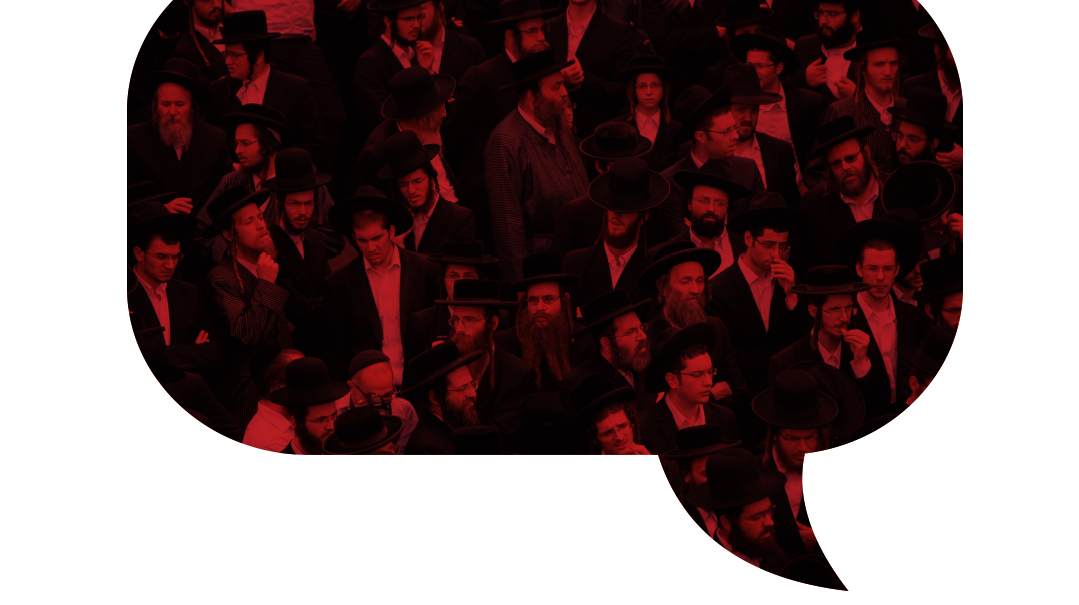Shtiah Shel Shabbat

In moderation, there is undeniable power to a l’chayim between Yidden, shtiah shel Shabbat

Last week, I conducted an interview, the first in several years.
It reminded me of my earliest days at this magazine, the burning, probing need to understand, to quantify, to comprehend the motivations of another person. It took place early on Shabbos morning, in a hotel in the center of Yerushalayim.
I had woken up especially early because it was Shabbos Mevarchim, an auspicious time to say the entire Sefer Tehillim of jet lag, and I made my way to the small hotel shul, where I was not alone.
There was a man sitting there, gray-haired, broad-shouldered, humming Tehillim to himself.
There were two sorts of guests in the hotel — actual visitors from abroad who were paying money for the accommodations, and mefunim, evacuees from communities across the country who’d been displaced since October 7. (Right, I did not stay at the Waldorf, and baruch Hashem, I have nevertheless merited to marry off children. And yes, I know your shvogger has this insane credit card offer that I don’t have to do anything for, just sign a paper and I’ll be entitled to seven free nights, plus a complimentary upgrade, and it’s a peshia not to call him.)
This man was clearly not a vacationer. His gray knit vest, white polyester button-down shirt, and pressed khakis had been laundered lichvod Shabbat in a hotel sink, laid out to dry on one of the many drying racks I had noticed in the stairwells of the lower floors, those designated for mefunim.
His clothing told one story, but his body language told a different one. There was something very settled about him, none of the air of restlessness and agitation I would have expected from a person displaced from home for nearly 500 days.
So I found some vague reason to engage him in conversation (What time is Shacharis?), and he answered with generosity (We start at 7:45, but we say Korbanot — if you’re in a rush, daven with the Ashkenazim in the next room), and then, I seamlessly pressed on, asking him where he was from.
He was from Shlomi, a beautiful community near the Lebanese border, and he — along with his wife and two daughters — had been living at this hotel for over a year.
Lately, things have been blessedly calm, and he returns to Shlomi by himself during the week, rejoining the family for Shabbos. He is a house-painter by trade, and there is no lack of work, so many homes having been damaged. He works long hours so that when his friends and neighbors return, their homes will be somewhat fresh.
How was he keeping it together? How was he sitting there, before dawn on a Shabbos, with a contented smile on his face, when he was essentially rootless?
He liked the question, finally turning to fully face me. A note of passion crept into his voice — it was important, this question, and he wanted me to “get” the answer.
They gathered together to daven each Shabbos, he told me, the Shlomi evacuees placed at this hotel and at nearby hotels, a minyan that helped retain some sense of home. Then, after davening, they gathered around one of the tables, and — there was a mischievous glint in his eye as he continued — and they, you know, he made a pouring motion, and finally came up with a term that pleased him — “shtiah shel Shabbat.”
They had a l’chayim together, the displaced Jews of Shlomi, the painters, falafel-makers, bus-drivers, and shoe salesmen.
The expression on his face when he said this was very moving.
Now, before we continue, a quick request to please read the next paragraph slowly and carefully.
Alcohol abuse is dangerous. The kiddush culture — scotch, tequila, and vodka flowing freely, empty bottles lined up like bowling pins on the table, children looking on wide-eyed as their fathers get drunk every Shabbos before finally staggering home for a seudah that a devoted Yiddishe mamme prepared in vain — is a real issue. But in moderation, there is undeniable power to a l’chayim between Yidden, shtiah shel Shabbat.
Around the table in a converted hotel conference room with a threadbare red carpet, Jews have gathered for the last 66 weeks and found stability: It is Shabbos Kodesh. They are together. They have a pillow on which to lay their heads, so l’chayim.
When I was a child, my grandfather would join us for the Seder. He did not have the need to overwhelm us with his chiddushim, and he generally said the same divrei Torah and stories each year. He would indicate the words in the Haggadah, “It is customary to raise the cup,” that appear before Vehi She’amdah — “And this is what has stood by our fathers and us.”
What is the Vehi referring to? What is it, this secret weapon that has strengthened, protected, and fortified?
The mefarshim suggest various answers, and my grandfather would smilingly suggest one more. It is customary to raise the cup — and say, “and it is this,” — this gleizele bronfen, this l’chayim between Yidden at the right moment, that has sustained us in difficult times.
Korbanos come with nesachim, a sacrifice offered along with a wine libation.
Wine represents the earthly fortune of man, the expression of complete joy — and this wine is brought to the Beis HaMikdash, where it is received in a kli shoreis, sanctified for Hashem. It is not “spilled,” but “poured” to the depths of the foundation of the Mizbeiach, expressing the belief that material fortune is not the goal of our existence… and the truth is that such prosperity is only ours when it is found at the foundation of the Mizbeiach (Rav Samson Raphael Hirsch, Bamidbar 15).
(Note: See the commentary in its original German to truly appreciate its magnificence and depth.)
(Further note: I don’t speak or read German, but I always wanted to be a person who can drop a line like that.)
We have to educate our children as to the dangers of drinking, and it starts by setting a good example, but we also have to find the right time and setting to give them the gauge that Yidden have always had about when and how a l’chayim is appropriate — and it is harder to teach the second lesson than it is to teach the first.
At about 7:15 in the morning, a good half hour before tefillah was to formally begin, people began to file into the hotel shul, taking their places on the scattered folding chairs, small tastes of stability in a very unstable world. One young man approached my friend and opened his tallis bag, revealing a burst of color. The house-painter looked for me, and tilted his head, indicating that I could also come see.
The new arrival looked at me suspiciously, then decided I was worthy. It was a small blue flask, filled with clear liquid.
“Arak,” he said proudly, “beiti. Homemade.”
He had no home, but he had homemade arak.
Then he removed his tallis and joined his friends for davening, for Korbanos.
Korbanos and nesachim. Sacrifice and flowing wine, the story of a people.
(Originally featured in Mishpacha, Issue 1048)
Oops! We could not locate your form.

